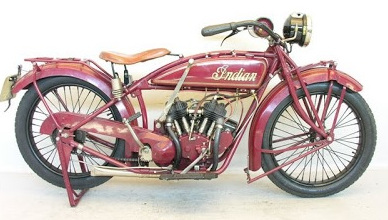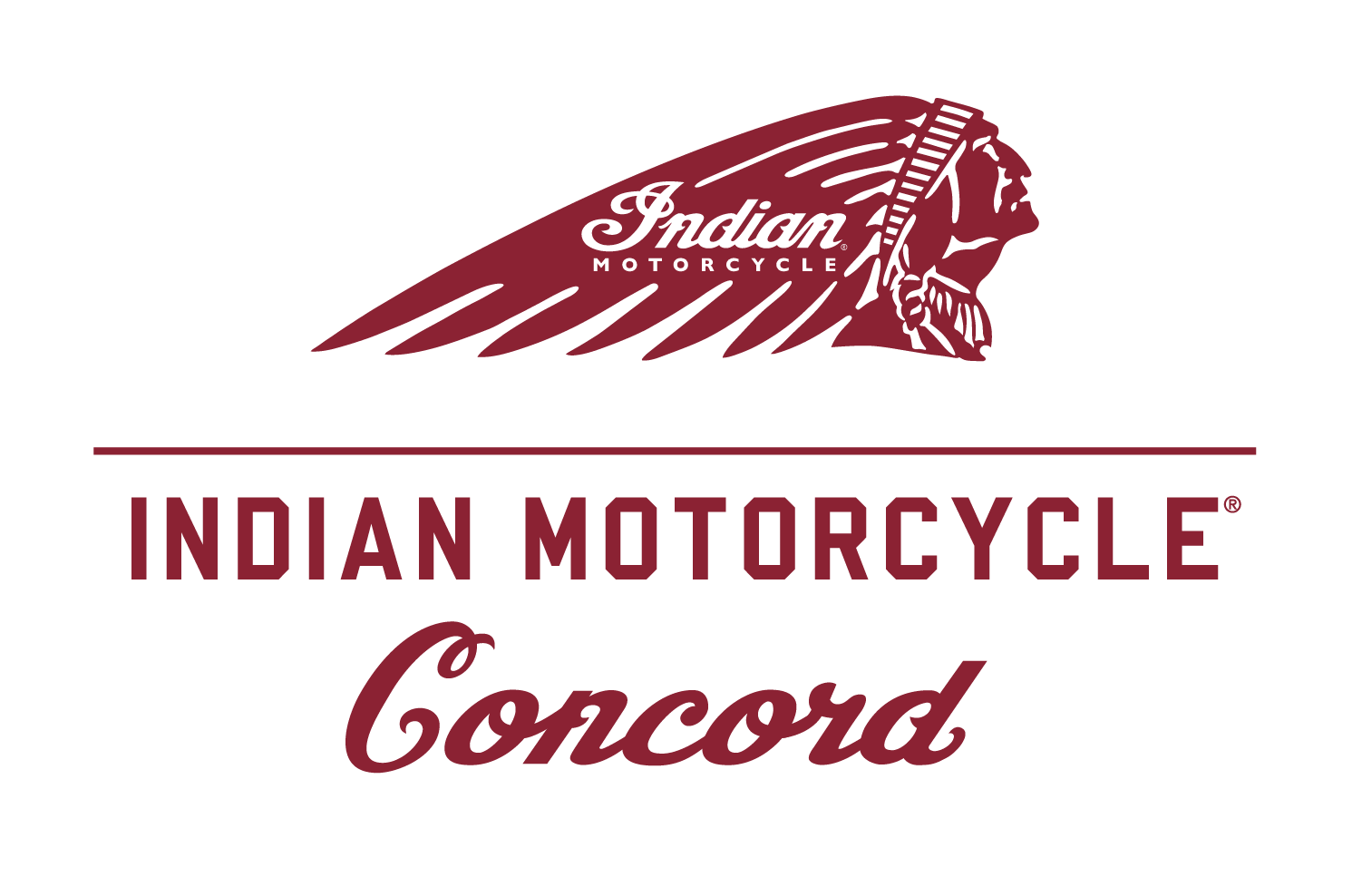Indian Motorcycle® of Concord History

A Brief History
By Stephen Taylor-Indian Motorcycle® Concord
The Birth of a Legend
To understand Indian Motorcycle® history as a motorcycle manufacturer one has to travel back in time. A time when Indian Motorcycle® was not the name of the company and motorcycles were not what was being produced. Indian Motorcycle® got its initial start in bike manufacturing in 1895. George M. Hendee was America's first national cycling champion-a dedicated full time bicycle racer. After his retirement from competitive racing Hendee decided to set up shop and manufacture bicycles for the general public-the Silver King for men and the Silver Queen for women. By 1898 Hendee's first attempt at business-the Hendee and Nelson Manufacturing Company, went bankrupt. Hendee however still had the dream. As the assets of the company went up for auction Hendee set about winning the bid. His projects were re-acquired and in 1898 Hendee set up shop. He set about producing a new line of bicycles under new branding-their name: Indians. The legend had been born.
Growth
As Hendee built his bicycle company a man essential to the growth and success of the brand would become a part of the conglomerate in January of 1901. After seeing Carl Hedstrom's motorized bicycle design and being highly impressed with the reliability and performance of the Pacer-which was rare for the time, Hendee saw the opportunity to hire the brilliant young mind as his chief engineer and designer for the Hendee Manufacturing Company. Hedstrom would soon build the prototype-no longer was Indian Motorcycle® a bicycle-the first Indian Motorcycle® was produced in 1901, at a time when William S. Harley was still working on his engine design and vision-which would not come to fruition and completion until 1903. With the two brilliant minds at work Hendee and Hedstrom would grow the Hedstrom Manufacturing Company into the world's largest motorcycle manufacturer by 1912. Indian Motorcycle® Motorcycles were developing a reputation as the best in both the practical world of riding and the world of racing-as the firm experienced success in both avenues.

World War I
With World War I in full effect by 1917 Indian Motorcycle® as an American company would do their part to help out the war efforts. Most all of Indian Motorcycle® powerplus line of motorcycles was sold off to the US military to help transportation in the war efforts abroad. Due to this the availability of the product to the general public became extremely limited, causing Indian Motorcycle® to lose their customer base and also losing their spot atop the board as the highest selling motorcycle brand in the United States to Harley-Davidson®.Merger with DuPont
After the war ended the 1920's would see some design excellence from Indian Motorcycle® come to the forefront. The Scout and Chief v-twin models, designed by lead designer Charles Franklin, became Indian Motorcycle® leading frontrunners. 1930 saw the company merge with DuPont Motors. E. Paul DuPont the founder of DuPont motors had previously been building automobiles but under the merger decided to concentrate his efforts on Indian Motorcycle® in general. By 1940 the merger was viewed as an overall success as Indian Motorcycle® was hot on Harley-Davidson®'s heels as the best-selling motorcycle in the United States. Under the DuPont merger Indian Motorcycle® as a brand also extended its reach into other areas of manufacturing, building such products as air conditioners, boating engines, and aircraft powerplants-a little known fact about a company synonymous with motorcycles.World War II and Indian Motorcycle® Demise
As with World War I it was requested by the US military that Indian Motorcycle® build a motorcycle intended for transport and usage in the war. Indian Motorcycle® response-the rare 841, was tested but determined to not be of much use as the US military found a vehicle much more suitable for the conditions-the Jeep. By 1945 the DuPont ownership wanted out of the declining company and sold off Indian Motorcycle® to a group led by Ralph Rogers. The popular Scout model was discontinued and Indian Motorcycle® as a company experimented with many different ideas that led to no market success-by 1953 the company went under and manufacturing came to a halt.1953 to 2006-Indian Motorcycle® ownership roulette
After the company went under in 1953 Indian Motorcycle® as a brand and company would experience a change of hands regularly for the next 50 plus years. Although the name and the badge of the company that was once Harley-Davidson®'s most annoying thorn in their side still meant something, the various ownership groups and disasters that followed would continue to let the company flounder and ultimately fail many times over. Brockhouse engineering (1953-1960), AMC (1960-1963), Floyd Clymer Imports (1963-1977), Eller Industries (1998), and the Indian Motorcycle® Company of America-a conglomerate of 9 merged companies (1999-2003) all would try and fail at bringing the brand back to its previous glory days.

Rebirth in King's Mountain 2006-2011
In 2006 Indian Motorcycle® as a brand was purchased by an equity firm based in London-Stellican Limited. The decision was made to start reproducing the Chief motorcycle-but this time in very limited quantities. Indian Motorcycle® made its new home in King's Mountain, North Carolina. With limited quantities of the chief being made Indian Motorcycle® and King's Mountain became synonymous with each other-with Indian Motorcycle® chiefs made during this time frame being labeled as "King's Mountain Indian Motorcycle®." The limited quantities produced meant that owning an Indian Motorcycle® became rare and a sign of exclusivity to riders. The reverence of the Indian Motorcycle® name still carried the brand-King's Mountain showed that the market for the historical name was there-the company just needed some leadership-and a group behind it with the financial backing and reputation to take it to the next level.
Polaris® Takes Over-2011-Present
Enter Polaris® US company with the pedigree and background to produce excellent powersports products. Although Polaris® is rather new to the motorcycle game they have proved their worth-their Victory Motorcycle® has been a rousing success growing leaps and bounds in less than 20 years. With this motorcycle success story already in place the company announced the purchase of the Indian Motorcycle® rights in 2011. Finally Indian Motorcycle® was under the control of a solid group with the financial stability to grow the product correctly. Over the course of the next 27 months Polaris® would design three brand new Indian Motorcycle® models-the Chief Classic, the Chief Vintage, and the Chieftain-the first ever Indian Motorcycle® featuring hard bags and a front fairing.
The Chief Classic
The Chief Classic was designed to be exactly that-classic. It holds the standard and much appreciated look of a classic older Indian Motorcycle® while integrating modern technology into its design. Available in Thunder Black, Springfield Blue, and Indian Motorcycle® Red (as are the other models released for 2014), the Classic features modern technologies such as ABS, cruise control, EFI, and keyless start-which also come standard on the Vintage and Chieftain models.
The Chief Vintage
Built on the same chassis and sharing the same drivetrain as the Classic the Vintage shares many of the same features-the main difference being the addition of tan leather quick release sidebags, a quick release windscreen on the front, a tan leather seat, and additional chroming.

The Chieftain
The top of the line Indian Motorcycle® from Polaris®-the Chieftain-is the first ever Indian Motorcycle® to be a so-called Hardbagger. The Chieftain is a completely different designed motorcycle than the Classic and Vintage and although it shares much of the modern technology it incorporates some major differences in its design. The Chieftain comes equipped with a stereo and speakers, Bluetooth, tire pressure sensors, and an electric motorized windshield capable of moving up and down and also tilting.
The Future
Indian Motorcycle® under the leadership of Polaris® looks to be heading in the right direction. The new models of Indian Motorcycle® have successfully kept their design close to their roots and pay homage to the past greatness of the company while incorporating today's modern technology into the bike almost seamlessly. Indian Motorcycle® remains an Iconic brand and the prestige is still there. 2015 will see the introduction of two-tone colors on the models and rumblings of possible ideas in the pipeline from the new ownership point to continued success. Indian Motorcycle® is on its way to retaining its place as one of the top Motorcycle brands of all-time.


